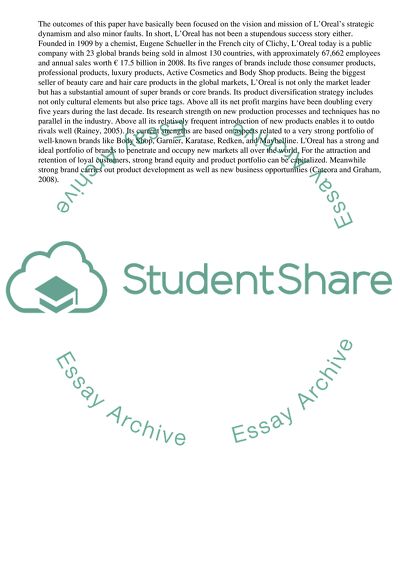Cite this document
(Strategic Management of LOreal Research Paper Example | Topics and Well Written Essays - 2750 words - 2, n.d.)
Strategic Management of LOreal Research Paper Example | Topics and Well Written Essays - 2750 words - 2. Retrieved from https://studentshare.org/management/1724405-strategic-management
Strategic Management of LOreal Research Paper Example | Topics and Well Written Essays - 2750 words - 2. Retrieved from https://studentshare.org/management/1724405-strategic-management
(Strategic Management of LOreal Research Paper Example | Topics and Well Written Essays - 2750 Words - 2)
Strategic Management of LOreal Research Paper Example | Topics and Well Written Essays - 2750 Words - 2. https://studentshare.org/management/1724405-strategic-management.
Strategic Management of LOreal Research Paper Example | Topics and Well Written Essays - 2750 Words - 2. https://studentshare.org/management/1724405-strategic-management.
“Strategic Management of LOreal Research Paper Example | Topics and Well Written Essays - 2750 Words - 2”, n.d. https://studentshare.org/management/1724405-strategic-management.


